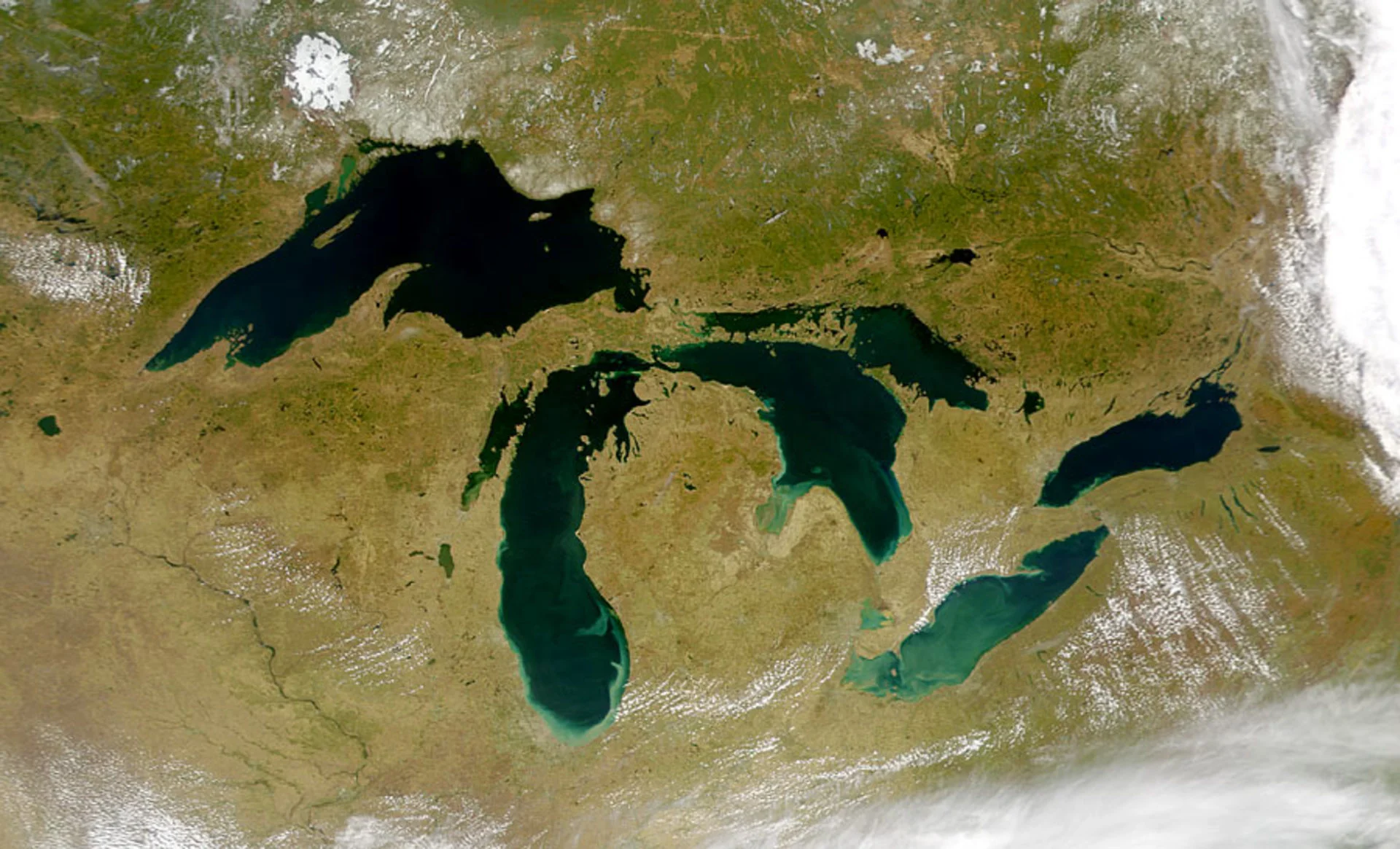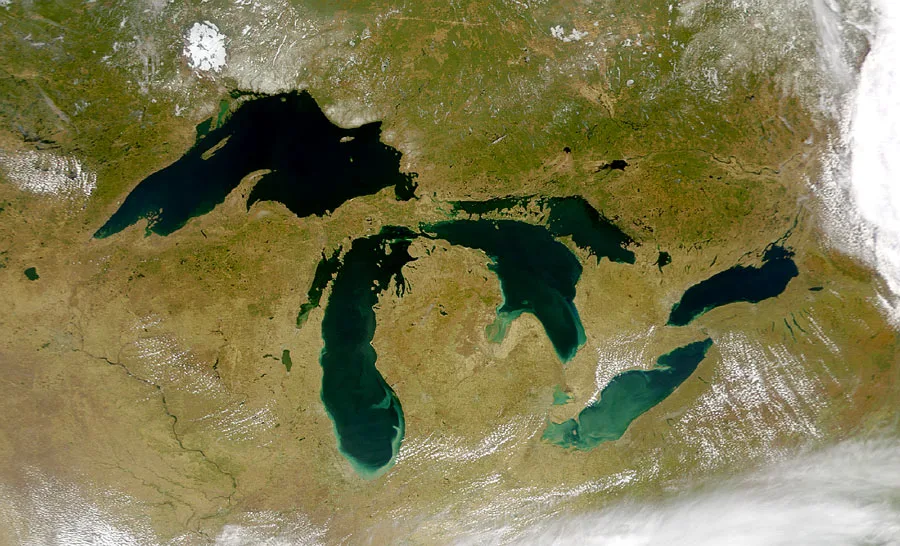
Great Lakes warming will trigger more extreme weather, study
The rapid warming of the Great Lakes is threatening an increased risk of flooding and severe storms that could have devastating impacts for the 34 million people that live in its Basin, according to a new study.
The Great Lakes has significant impacts on weather in both surrounding Canadian and American regions, which include moderating temperatures throughout the seasons, influencing cloud cover as well as precipitation above and downwind of the lakes, and summer rainfall that creates optimal growing conditions in wine country and orchards in Michigan's "fruit belt."
The Great Lakes are also responsible for some of the heaviest snowfalls that occur in traditional Snow Belt regions within the Basin. As cold Canadian air flows over unfrozen, relatively warm Great Lakes, the moisture and instability from this contrast in temperature builds one or multiple bands of snow that are then deposited over locations downwind from the lakes.

A view of the Great Lakes from space. Credit: Wikimedia Commons
These intricate weather patterns can significantly change with a warming atmosphere, and the study emphasizes that the unprecedented warming will bring dramatic changes in weather that will have damaging and costly consequences.
The atmosphere has warmed about 1°C since the early 1800s, and between 1901 and 2016 the Great Lakes basin warmed 0.89°C in annual mean temperature. Warmer atmospheres hold more water vapour, and the Great Lakes region saw an almost 10 per cent increase in annual precipitation between 1901 and 2015, which frequently came as unusually large events, such as heavy rainstorms.
Heavier rainfall will not occur throughout all the seasons as the atmosphere warms -- it will cause a redistribution of seasonal precipitation patterns, and could result in decreased summer precipitation by 5 to 15 per cent for most of the Great Lake regions by 2100. Winter snowfall will change within the Basin as well, as lake effect snowfalls could become more dramatic and storms bringing 20cm of snow in one day could become more of a regular occurrence.
Scorching summer days are also set to increase in frequency, which poses significant human health risks. Areas within the Great Lakes Basin will see an increase of 17 to 40 warm days each year, and the number of extremely cold days, with temperatures less than 0°C, will decrease significantly.
The Great Lakes region is home to nearly one third of all Canadians, and these 9.8 million rely on them for a safe and functioning habitat. In addition to the important ecological role the Great Lakes plays in providing fresh water and a home to hundreds of different species, regional fisheries within the Basin generates $7 billion each year, and tourism generates over $16 billion per year.
Given the importance that the Great Lakes have on the environments and populations surrounding them in both Canada and the U.S., the study emphasizes that the natural resources of the Great Lake should not be taken for granted, and urgent action is needed to protect the Basin.










